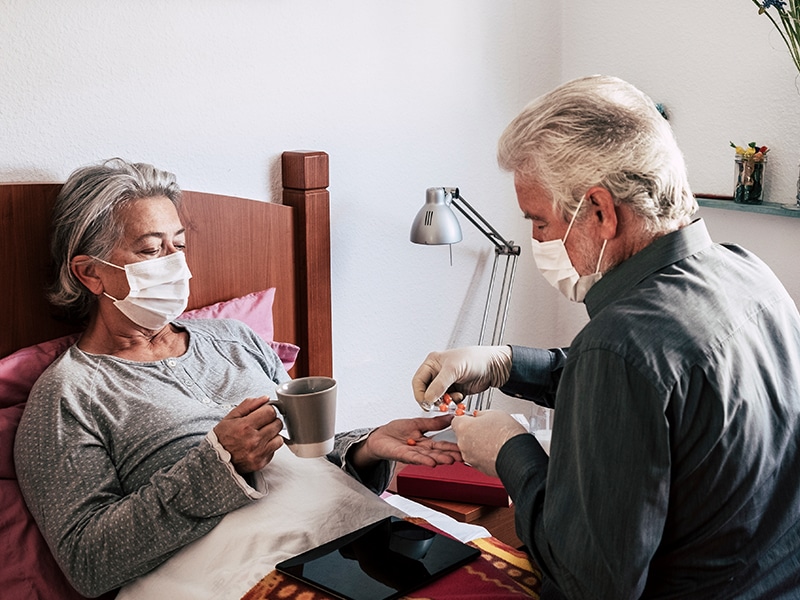Most people infected with COVID-19 don’t require hospitalization or intensive care. In fact, they are often told to simply stay home. Unfortunately, following that advice can expose family members or roommates to the highly contagious virus.
So, what can you do to keep your household safe while a loved one recovers from COVID-19 at home? And what can caregivers do to stay healthy?
Limit contact
Only one healthy person should provide care to the sick person. The sick person should not be exposed to anyone who isn’t providing consistent care. Do not allow unnecessary visitors into your home, but don’t isolate the patient either. Find other ways to socialize, such as phone or video calls.
“Mental health is just as important to maintain as your physical health, so consider using various video chat platforms to stay in touch with loved ones,” says Sofia Ansari, MD, an infectious disease physician on the medical staff at Methodist Richardson Medical Center.
Disinfect surfaces
Clean all surfaces daily and frequently disinfect high-touch surfaces throughout the day, including in areas other than the sick person’s room and designated bathroom. The only person who should clean the sick person’s designated room and bathroom is the sick person. Avoid sharing household items, such as dishes, drinking glasses, cups, eating utensils, towels, bedding, or other items. After an ill person uses these items, wash them thoroughly. Wash your hands immediately after removing gloves. Follow the Centers for Disease Control and Prevention guidelines for detailed instructions on how to clean and disinfect your home.
Protect yourself
People who are at higher risk of serious complications from COVID-19 should not care for someone with COVID-19. These people include the elderly and those with chronic medical conditions or compromised immune systems. The caretaker should always wear personal protective equipment (PPE) when caring for someone with COVID-19, such as a medical mask and disposable gloves. Wash your hands properly and often, especially after contact with the patient and after removing gloves, face masks, and eye protection. Dry your hands with disposable paper towels. Avoid touching your eyes, nose, and mouth with unwashed hands.
Maintain these supplies
When caring for someone with COVID-19, make sure you have access to the following items:
- Medical masks, if available, or a cloth face covering
- Eye protection (face shield or goggles) for the caregiver
- Disposable, single-use gloves for the caregiver
- Disposable paper towels
- Tissues
- Waste container with a plastic liner
- Thermometer
- Blood pressure monitor
- Over-the-counter medication to reduce fever, preferably acetaminophen
- Running water
- Hand soap
- Alcohol-based hand sanitizer containing at least 60% alcohol
- Dish soap and laundry detergent
- Regular household cleaning products
- One-step cleaner/disinfectant
- Hard surface disinfectant or, if not available, concentrated (5%) liquid bleach and a separate container for dilution
- Alcohol prep wipes or appropriate cleaning products for high-touch electronics
- Pulse oximeter
“I highly recommend the use of a pulse oximeter, which is a small device that clips to your finger to measure oxygen levels in your blood,” Dr. Ansari says. “You should discuss these results, along with your blood pressure and temperature, with your doctor via a televisit appointment.”
Methodist Now is one example. It allows you to chat with a Methodist Family Health Center doctor seven days a week.
Treat symptoms
Make sure the patient drinks a lot of fluids to stay hydrated and rests at home. Here are some medications and home remedies you may want to have handy to relieve common symptoms of the coronavirus. As always, be sure to consult with your healthcare provider before using.
Play it safe
If the patient’s condition deteriorates, don’t wait to seek medical attention. Schedule a virtual visit, a trip to the doctor’s office, or in severe cases, the emergency department.
The decision to discontinue home isolation precautions should be made on a case-by-case basis, in consultation with healthcare providers and state and local health departments.

